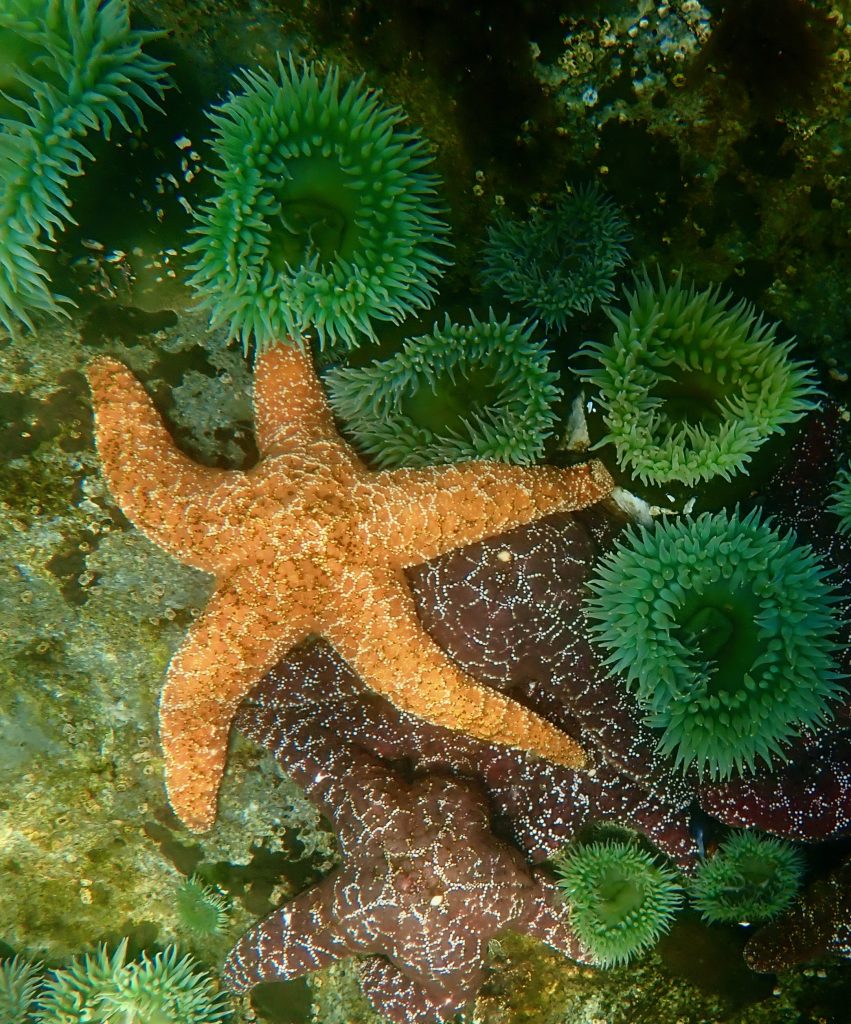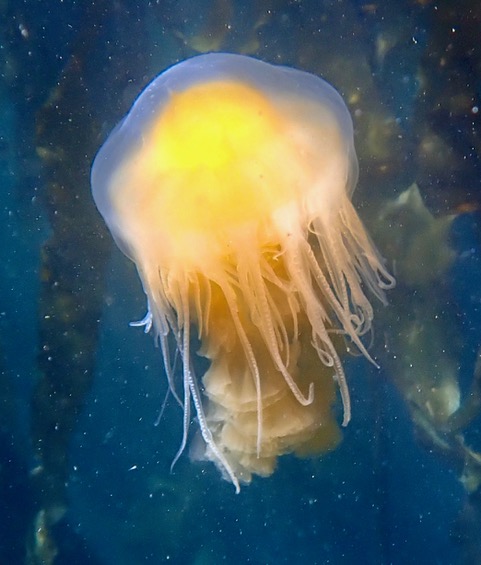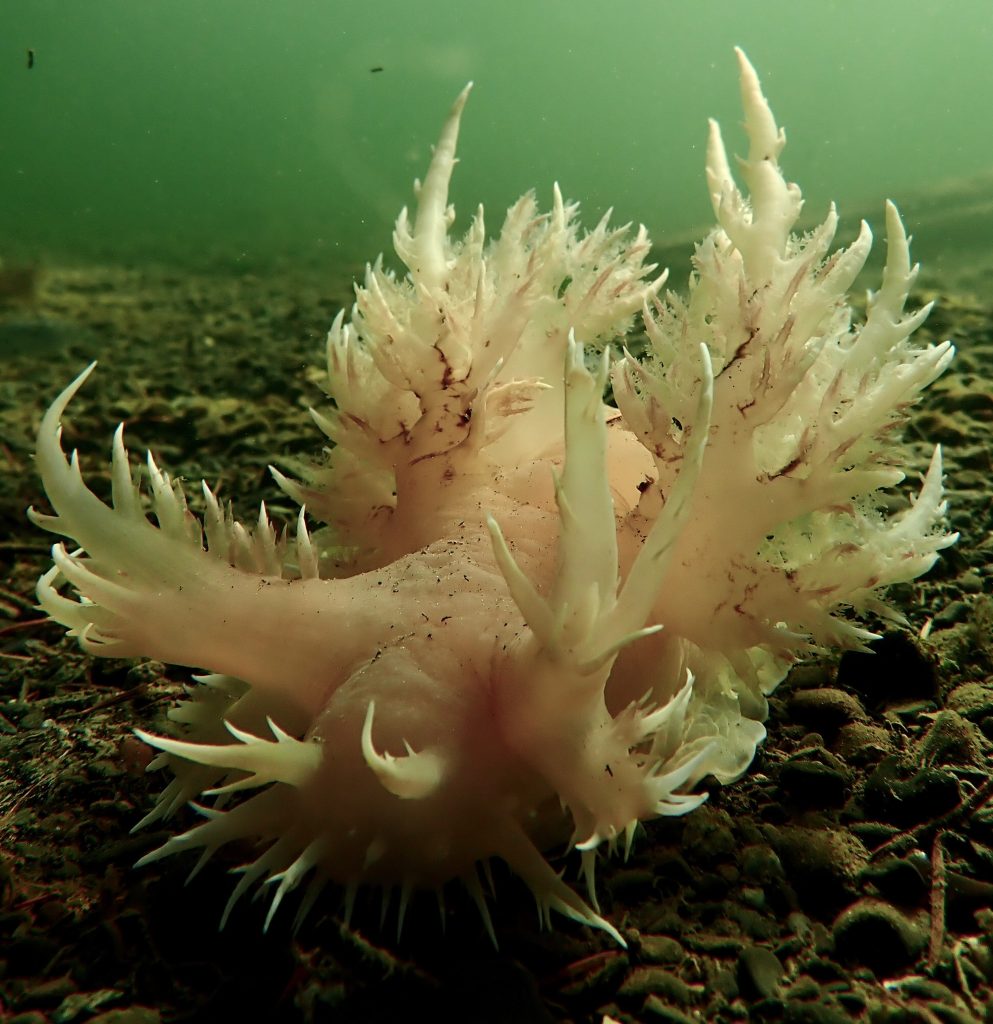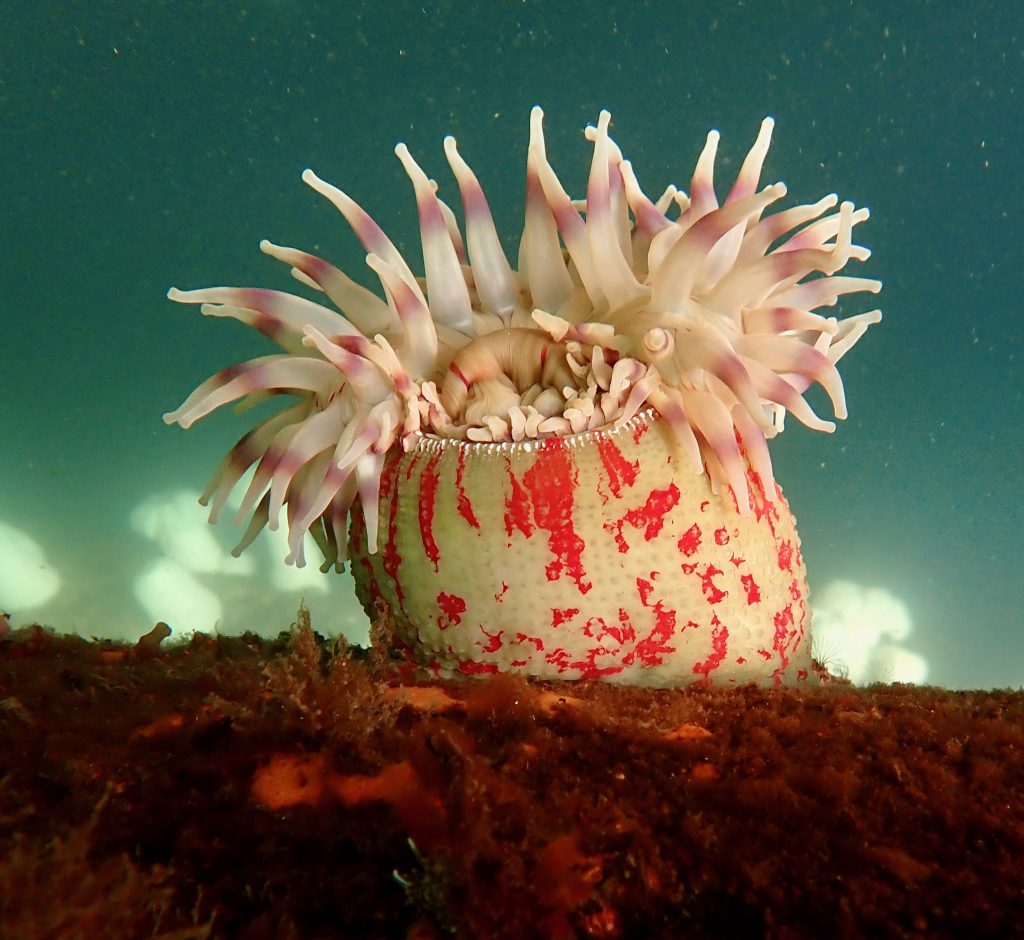Unveiling the depths
Snorkelling Adventures Around Vancouver Island and the Gulf Islands: The Ultimate Guide
by Sara Ellison
Madeira Park: Harbour Publishing, 2023
$26.95 / 9781990776151
Reviewed by Amy Tucker
*

For as long as I can remember, I have felt most alive in the water—whether swimming, kayaking along the shoreline, or snorkelling in search of hidden marine life. The Pacific has always been my backyard, yet for years, I thought of cold-water snorkelling as something for the truly dedicated—divers in drysuits, venturing into dark, frigid waters. Warm, tropical destinations seemed like the obvious choice for snorkelling, with their clear, turquoise seas and colourful reefs. Then I read Snorkelling Adventures Around Vancouver Island and the Gulf Islands by Sara Ellison, and everything changed.
Vancouver Island’s rugged coastline and rich marine ecosystems have drawn divers and ocean enthusiasts worldwide. However, snorkelling in these frigid waters is often overshadowed by the allure of warmer, tropical destinations. Ellison presents an in-depth guide to the hidden treasures beneath BC’s cold but biodiverse waters, revealing a world teeming with vibrant marine life. More than just a travel guide, Ellison’s book is an invitation to embrace an underrated adventure that reveals a world teeming with vibrant marine life, from giant Pacific octopuses to fields of colorful anemones and elusive nudibranchs.

Ellison replaces outdated assumptions with vivid descriptions of towering kelp forests, brilliant nudibranchs, charismatic wolf eels, and playful sea lions. “The underwater world of the Pacific Northwest is both colourful and biodiverse. Here, you can commune with the giant Pacific octopus and face-off with curmudgeonly wolf-eels who hang out in predictable locations like Grandpa on his porch.” It’s impossible to read this book without feeling the pull of the water, without wanting to zip up a wetsuit and dive into this mysterious, thriving world beneath the surface.
Ellison, a Canadian astrophysicist and professor at the University of Victoria, combines meticulous field research with scientific expertise, having explored over 200 snorkelling sites to curate this guide. She spent years personally exploring over 200 snorkelling sites, carefully selecting the 50+ best locations based on accessibility, marine life, and overall experience. This means every site she describes is not just recommended—it’s vetted. She does not just list places; she walks you through them, offering real-world advice on what to expect. Her knowledge of tides, visibility, and seasonal variations ensures you arrive at the right time and conditions for the best possible experience. “The tides around Vancouver Island are highly variable, changing by up to 5 metres through the days and months in some locations. The intertidal habitat is huge, and what you can see from the surface one day requires diving down 5 metres on another.”

The book is divided into five central regions—Greater Victoria, the West Coast, the Gulf Islands, Cowichan to Comox, and the North Island—each with a breakdown of directions, water conditions, and the marine life you will likely encounter. Some locations are ideal for beginners, offering calm, shallow waters with easy shore entries, while others are better suited to experienced snorkellers or freedivers. “Snorkelling is primarily a surface activity. However, my critter lists include species I have seen in approximately the water column’s top 10 metres of the water column… Finally, 10 metres is the visibility you can hope for on a good day, such that with optimal conditions and a sharp pair of eyes, even the surface snorkeller can glimpse into the shallow subtidal zone.”
As someone who has spent years exploring the water in different ways, I was excited by the range of experiences offered in this book. Some locations allow for peaceful, slow exploration, perfect for those who love to take their time and observe marine life up close. Others challenge you to push beyond the surface, diving into deeper waters filled with towering walls of anemones and bright schools of fish. Every site offers something different, making it easy to tailor your snorkelling experience to your skill level and interests.
Ellison’s descriptions of marine life are one of the highlights of this book. She doesn’t just list species—she brings them to life enthusiastically, making you want to seek them out for yourself. “From the giant (but now critically endangered) sunflower star and the many colour variations of the striped sunstar to the adorably pudgy cushion star, I never tire of these diverse denizens of the Asteroidea class.” And then there are the nudibranchs—tiny, impossibly bright, and completely mesmerizing. “Nudibranchs are the darlings of the underwater photographer and one of the favourite critter families among snorkellers in general.” These delicate creatures come in electric blues, fiery oranges, and deep purples; the book highlights the best locations to find them.

Beyond marine life, the book excels in practical advice. Snorkelling in cold water differs from warm-water snorkelling, and Ellison ensures readers are fully prepared. She covers everything from choosing the right wetsuit thickness to layering strategies and preventing cold-water shock. “For those snorkellers who would like to explore the wider extent of Vancouver Island’s coastline, or snorkel beyond the summer months, additional wetsuit guidance is required.” Her advice removes the intimidation factor, making cold-water snorkelling possible and exciting.
And for those worried about marine life encounters, she quickly puts fears to rest. “There is little to fear from marine life in our island’s waters. There is nothing man-eating or deadly venomous. The most unpleasant sting you might receive is from the lion’s mane jelly (but almost all the other jelly species are harmless).” Knowing that the most significant risk in these waters is a mild jellyfish sting rather than a lurking shark allows snorkellers to embrace the adventure without hesitation.

Beyond its practical applications, this book is also a call to conservation. Snorkelling is more than just about seeing marine life—it’s about understanding, respecting, and protecting it. “Having some local intel is essential to staying warm and safe, as well as to knowing just where (and when) to go to see the interesting critters. All of this is necessary for an enjoyable and rewarding snorkel experience.” By exploring BC’s waters firsthand, snorkellers gain a deeper appreciation for what needs to be protected, whether kelp forests threatened by warming waters or species facing habitat loss.
Ellison’s scientific background enriches the guide with accurate ecological information, while her engaging style makes her writing accessible to a wide range of readers, from novice to experienced snorkellers. She is notable for her emphasis on marine conservation, advocating that personal experiences underwater can cultivate a more profound respect and understanding of aquatic ecosystems.

If you love the water—whether as a swimmer, kayaker, snorkeller, or simply someone who feels at home by the ocean—this book will open your eyes to the magic of BC’s coastline. It is a beautifully written, deeply researched, and visually stunning guide that will change how you see your backyard. I can already see myself repeatedly flipping through its pages, planning my next snorkelling trip, marking locations to visit, and returning to its practical advice when needed.
If you have ever stood on the shore, staring at the Pacific and wondering what’s beneath the surface, now is the time to find out. This book removes hesitation and replaces it with excitement, confidence, and wonder. Get your copy, grab your snorkel gear, and experience the magic of BC’s underwater world. I highly recommend this book.
*

Amy Tucker is an educator and researcher with more than two decades of experience in post-secondary education. Since 2001, she has worked as a University Instructor and Open Learning Faculty Member at Thompson Rivers University (TRU). Her primary areas of focus include education, training, recruitment, career development, and management. Her research emphasizes decolonizing education, promoting reconciliation, and advancing principles of equity, diversity, and inclusion (EDI) in both academic and community settings. In addition to her academic work, Amy enjoys outdoor activities such as running, swimming, cycling, hiking, and kayaking. Her adventurous spirit shines through in her participation in various athletic events and her passion for exploring the natural beauty of British Columbia. Amy shares her experiences as an athlete in her newspaper column, “The Accidental Athlete,” which appears in the Kamloops Chronicle. Kukwstsétsemc. [Editor’s Note: Amy Tucker has reviewed books by Jody Wilson-Raybould, Peter Edwards and Kevin Loring, Russ Grabb, Meaghan Marie Hackinen, Jayne Seagrave, and Joanna Kafarowski for The British Columbia Review.]
*
The British Columbia Review
Interim Editors, 2023-26: Trevor Marc Hughes (non-fiction), Brett Josef Grubisic (fiction)
Publisher: Richard Mackie
Formerly The Ormsby Review, The British Columbia Review is an on-line book review and journal service for BC writers and readers. The Advisory Board now consists of Jean Barman, Wade Davis, Robin Fisher, Barry Gough, Hugh Johnston, Kathy Mezei, Patricia Roy, and Graeme Wynn. Provincial Government Patron (since September 2018): Creative BC. Honorary Patron: Yosef Wosk. Scholarly Patron: SFU Graduate Liberal Studies. The British Columbia Review was founded in 2016 by Richard Mackie and Alan Twigg.
“Only connect.” – E.M. Forster